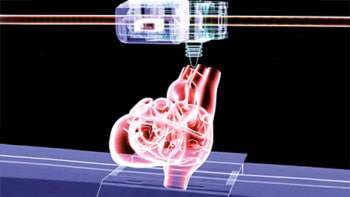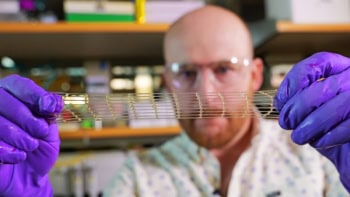Progress in organ-on-a-chip technology could enhance the screening of new pharmaceutical drugs, potentially reducing the number of expensive failures as new formulations move beyond early-stage development. One key problem is that drug behaviour is affected by differences in kidney performance between animals and humans, which makes it difficult to translate test results from one species to another. At the most extreme, drugs that are safe and efficacious in animal studies may be toxic to humans if given in the same amounts.

To show how microfluidic devices containing immobilized animal or human cells can help to bridge this gap, researchers based in the US and Korea have used a so-called “perfused kidney-on-a-chip” to compare the toxic impact of a broad-spectrum antibiotic called gentamicin when administered at the same dose, but in two different ways.
The team – led by Shuichi Takayama, now at Georgia Tech, and including Se Joong Kim on sabbatical from Seoul National University – mimicked the drug clearance profile for a single injection by starting the cell exposure at 19.2 mM (millimolar) of gentamicin and reducing the dosage by half every two hours over a 24-hour period. In the second regimen, the researchers continuously infused the kidney cell-containing chip with 3 mM of gentamicin, again for a period of 24 hours.
“The ease with which you can temporally modulate drug exposure is one of the strengths of microfluidics over conventional static cultures such as dishes or microwells,” says Takayama.
Microfluidic techniques such as the set-up used by Takayama and his team can generate physiological microenvironments for a variety of tissues and organs, making them applicable for evaluating a wide range of treatments. The device developed for this study consists of a top channel and a bottom channel separated by a porous membrane, which accommodates the cell layer.

3D bioprinting smoothes path towards cartilage repair
In the study, published in the journal Biofabrication, the researchers illustrated that different pharmacokinetic profiles can be readily recreated in a kidney-on-a-chip system. Also, by using physiologically and clinically relevant sub-lethal cell-injury markers, the group was able to show how different drug administration regimens can affect the kidney.
Looking at the data, the injection mimicking regimen led to lower cytotoxicity compared with continuous infusion, which the team attributes to less disruption of cell–cell junctions.
“We are encouraged by the ability to resolve sub-lethal cell injury responses to different pharmacokinetic profiles imposed on the kidney cells,” comments Takayama. “Our next steps are to scale up the method and make it more accessible and user friendly.”
Full details on the work can be found in the journal Biofabrication.
- This article is one of a series of reports reviewing progress on high-impact research originally published in the IOP Publishing journal Biofabrication.



